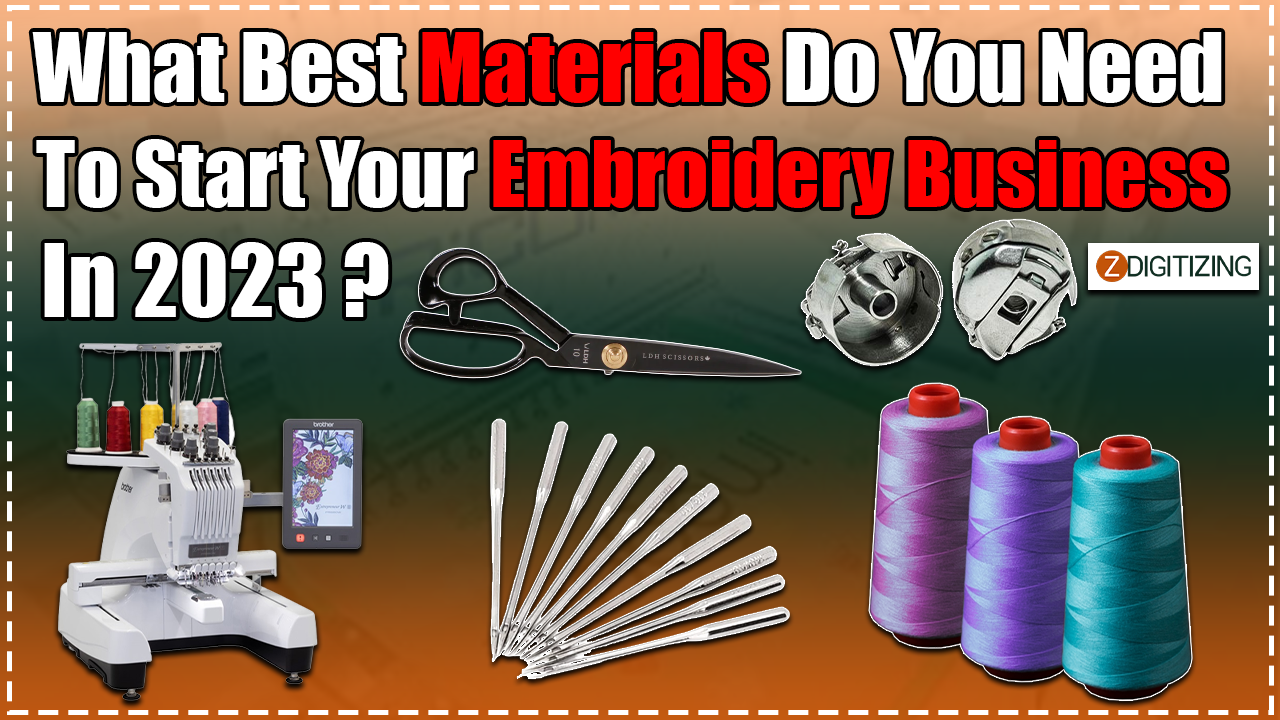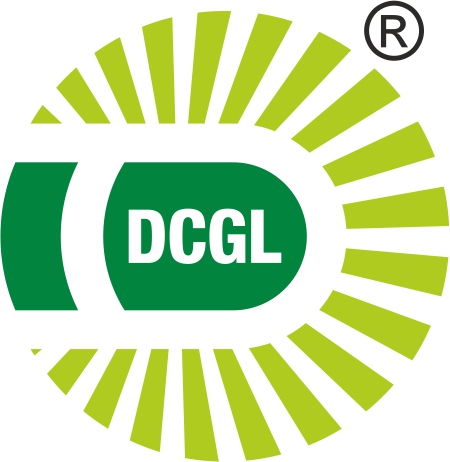Embarking on an embroidery business journey is an exciting endeavor, and selecting the right materials is a crucial step toward success. As the year 2023 unfolds, the world of embroidery is witnessing advancements in both traditional and digital techniques, opening up new possibilities for artisans and entrepreneurs. In this comprehensive guide, we explore the best materials needed to kickstart and elevate your embroidery business in 2023, ensuring a harmonious blend of creativity, quality, and innovation.
The Essential Materials for Your Embroidery Business:
1. Quality Embroidery Machine:
- At the heart of every embroidery business is a reliable and efficient embroidery machine. In 2023, consider investing in a machine that offers advanced features such as multiple needle options, a large embroidery area, and compatibility with digital designs. Popular choices include machines from brands like Brother, Janome, and Tajima.
2. Digitizing Software:
- Elevate your embroidery game with cutting-edge digitizing software. This essential tool allows you to create and edit digital embroidery designs. Look for software that provides intuitive interfaces, advanced editing capabilities, and compatibility with various file formats. Options like Wilcom EmbroideryStudio, Hatch Embroidery, and Embrilliance Essentials are popular among embroidery enthusiasts.
3. Stabilizers:
- Stabilizers are the unsung heroes of embroidery, providing the necessary support to ensure clean and precise stitching. In 2023, explore a variety of stabilizers, including tear-away, cut-away, and water-soluble options. The choice of stabilizer depends on the fabric type and design complexity.
4. High-Quality Threads:
- The thread you choose can make or break your embroidery project. Opt for high-quality embroidery threads with vibrant colors and durability. Brands like Madeira, Sulky, and Isacord are renowned for their thread quality and extensive color palettes.
5. Embroidery Hoops:
- An essential tool for securing fabric during the embroidery process, embroidery hoops come in various sizes and materials. In 2023, invest in durable and adjustable hoops that accommodate different fabric thicknesses. Wooden and plastic hoops are popular choices for their versatility.
6. Assorted Needles:
- A variety of needles ensures you’re equipped to handle different fabrics and design intricacies. Explore embroidery needles in various sizes and types, including ballpoint needles for knits and sharps for delicate fabrics. Keep a selection of needles to accommodate diverse projects.
7. Quality Fabrics:
- The choice of fabric significantly influences the outcome of your embroidery. Source high-quality fabrics in different colors and textures to cater to a broad range of customer preferences. Cotton, linen, and blends are popular choices for their embroidery-friendly characteristics.
8. Bobbin Thread:
- Bobbin thread plays a crucial role in the underside of your embroidery work. Choose a lightweight and compatible bobbin thread that complements your embroidery threads. Using a quality bobbin thread contributes to the overall stability and longevity of your embroidered pieces.
9. Embroidery Scissors:
- Precision is key in embroidery, and a pair of sharp, embroidery-specific scissors is indispensable. Look for scissors with fine points for accurate cutting of threads and appliqué materials. Keep multiple pairs on hand for different tasks.
10. Storage and Organization Solutions:
- Maintain a well-organized workspace with storage solutions for your threads, fabrics, and tools. Consider storage cabinets, thread racks, and labeled containers to streamline your workflow and locate materials easily.
- Good News: If you are looking for custom embroidery digitizing service, Then ZDigitizing is best choice for you. Zdigitizing is a professional company that provides complete digitizing and vector art services worldwide.
Advanced Materials for Innovation:
1. Specialty Threads:
- Explore the world of specialty threads to add a unique touch to your embroidery creations. Metallic threads, glow-in-the-dark threads, and variegated threads can elevate your designs and cater to niche markets.
2. Smart Fabrics and Wearables:
- Stay ahead of the curve by experimenting with smart fabrics and wearables. These innovative materials integrate technology into embroidery, opening avenues for interactive and functional designs. Think beyond traditional fabrics and explore conductive threads and fabrics with embedded sensors.
3. Environmentally Friendly Materials:
- As sustainability becomes a priority, consider incorporating environmentally friendly materials into your embroidery business. Explore organic fabrics, recycled threads, and eco-friendly stabilizers to align your business with conscious consumer choices.
4. Heat-Transfer Vinyl (HTV):
- Expand your offerings by incorporating heat-transfer vinyl into your embroidery projects. HTV allows you to add intricate designs and details to garments, providing a versatile and creative dimension to your business.
5. Embroidery Blanks:
- Embroidery blanks are pre-made items ready for embroidery, such as hats, tote bags, and apparel. Investing in a variety of embroidery blanks allows you to offer a diverse range of products without the need for extensive manufacturing.
6. Augmented Reality Tools:
- Explore augmented reality tools that allow you to preview digital embroidery designs on actual garments in real-time. These tools enhance your design process, enabling you to visualize the final result before initiating the embroidery.
7. RFID Tags for Inventory Management:
- Streamline your inventory management with RFID tags. These small, radio-frequency identification tags can be attached to materials and products, providing a smart and efficient way to track and manage your embroidery supplies.
Establishing a Workflow:
1. Design Workspace:
- Dedicate a specific area for designing and digitizing. Ensure your workspace is equipped with a reliable computer, digitizing software, and a comfortable chair to support long hours of creativity.
2. Embroidery Station:
- Set up a designated embroidery station with ample lighting and ventilation. Arrange your embroidery machine, stabilizers, and other tools for easy accessibility. Consider investing in a quality chair and anti-fatigue mat to enhance comfort during extended embroidery sessions.
3. Storage and Inventory System:
- Implement an efficient storage and inventory system to keep track of your materials. Label shelves, bins, and containers to facilitate easy identification. Regularly assess your inventory to replenish supplies and prevent any disruptions in your workflow.
4. Quality Control Area:
- Dedicate a space for quality control to inspect finished embroidery pieces. This area should be well-lit, allowing you to scrutinize each detail of your work before presenting it to clients.
5. Customer Interaction Space:
- If your business involves direct customer interactions, create a welcoming space for consultations and order pickups. Ensure this area reflects your brand identity and showcases your embroidery expertise.
Pricing Your Embroidery Work:
1. Hourly Rate Calculation:
- Determine your desired hourly wage for your embroidery work. Calculate the time spent on each project, including design creation, digitization, and machine embroidery. Multiply the hours by your hourly rate to establish a labor cost.
2. Materials Cost:
- Factor in the cost of materials used for each project, including threads, stabilizers, and fabrics. Keep a detailed record of material expenses to accurately calculate the overall cost of each embroidered piece.
3. Overhead and Business Expenses:
- Consider overhead costs such as rent, utilities, and equipment maintenance. Allocate a portion of these expenses to each project to ensure your pricing covers the broader operational costs of your embroidery business.
4. Market Research:
- Research the market to understand pricing standards within your niche. Analyze the rates charged by competitors with similar offerings and expertise. Position your pricing competitively while highlighting the unique value your business brings to customers.
5. Value-Based Pricing:
- Implement a value-based pricing strategy that reflects the perceived value of your embroidery work. Consider factors such as customization, design intricacy, and the exclusivity of your creations when determining pricing.
Marketing Your Embroidery Business:
1. Online Presence:
- Establish a strong online presence through a professional website and active social media profiles. Showcase your portfolio, share behind-the-scenes glimpses, and engage with your audience to build a community around your embroidery brand.
2. Photography and Visuals:
- Invest time in capturing high-quality photographs of your embroidery work. Visuals play a pivotal role in attracting customers, so ensure your portfolio is visually appealing and showcases the details of your craftsmanship.
3. Collaborations and Partnerships:
- Explore collaborations with local businesses, fashion designers, or event planners to expand your reach. Partnerships can lead to exciting opportunities for custom projects and increased visibility within your community.
4. Customer Testimonials:
- Encourage satisfied customers to provide testimonials and reviews. Positive feedback builds trust and credibility, influencing potential clients to choose your embroidery services over competitors.
5. Educational Content:
- Share your expertise through educational content. Create blog posts, video tutorials, or live sessions that offer insights into embroidery techniques, design trends, and the behind-the-scenes processes of your business.
Embracing Innovation and Growth:
In 2023, the embroidery landscape is brimming with opportunities for those who embrace innovation, prioritize quality, and understand the evolving needs of customers. By carefully selecting the best materials, establishing an efficient workflow, pricing your embroidery work strategically, and implementing effective marketing strategies, you can position your embroidery business for success in the dynamic and creative world of stitching artistry.
Zdigitizing
We trust this article might really work out for you. To digitize embroiery plan you would require an expert like ZDigitizing, as digitizing is a mind boggling process.
Zdigitizing is a digitizing embroidery service organization that gives embroidery digitizing service and vector craftsmanship benefits all around the world to organizations, ventures, and enterprises. Zdigitizing gives fashionable, strong, and sensible custom digitizing embroidery and vector craftsmanship administrations. We have been conveying first class digitizing embroidery administrations for 20+ years.





